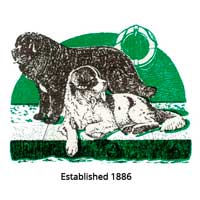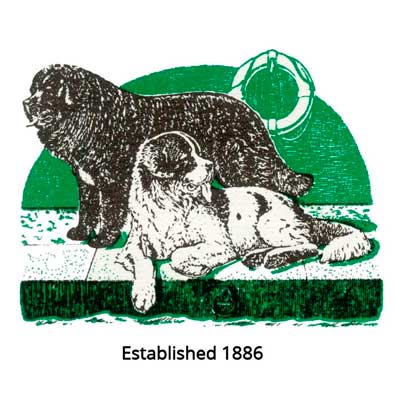The Newfoundland Club
Representing an ancient breed in the modern era
A brief history of the breed
The Newfoundland developed on the island from which it takes its name. It is almost certainly a combination of the ancient, native Indian dogs and the many European breeds, which were carried across the Atlantic by explorers and fishermen from the 15th century onwards. By the end of the 17th century this 'cocktail' had stabilised into a large, web-footed, thick coated dog, capable of draught and water work.
Its useful qualities were soon recognised well beyond the North American continent, as was its equable temperament, which meant it worked well with other dogs and was easily trained. Imported in considerable numbers throughout Europe, these dogs soon attracted the attention of rich people, who brought them to ornament their estates and entertain (and watch over) their children.
Many tales have been told of the courage displayed by Newfoundland dogs in lifesaving exploits and this has attracted the attention of a several artists, who have portrayed the dogs in paint, stone, bronze and porcelain over the last two centuries.
The breed prospered in the United Kingdom, until 1914 and again in 1939, when its numbers were almost fatally depleted by wartime restrictions. Since the 1950's there has been a steady increase in numbers and popularity, while still remaining a relatively uncommon breed, this is not least because a Newfoundland's great size and fondness for playing around in mud and water make it very unsuitable for most homes.


